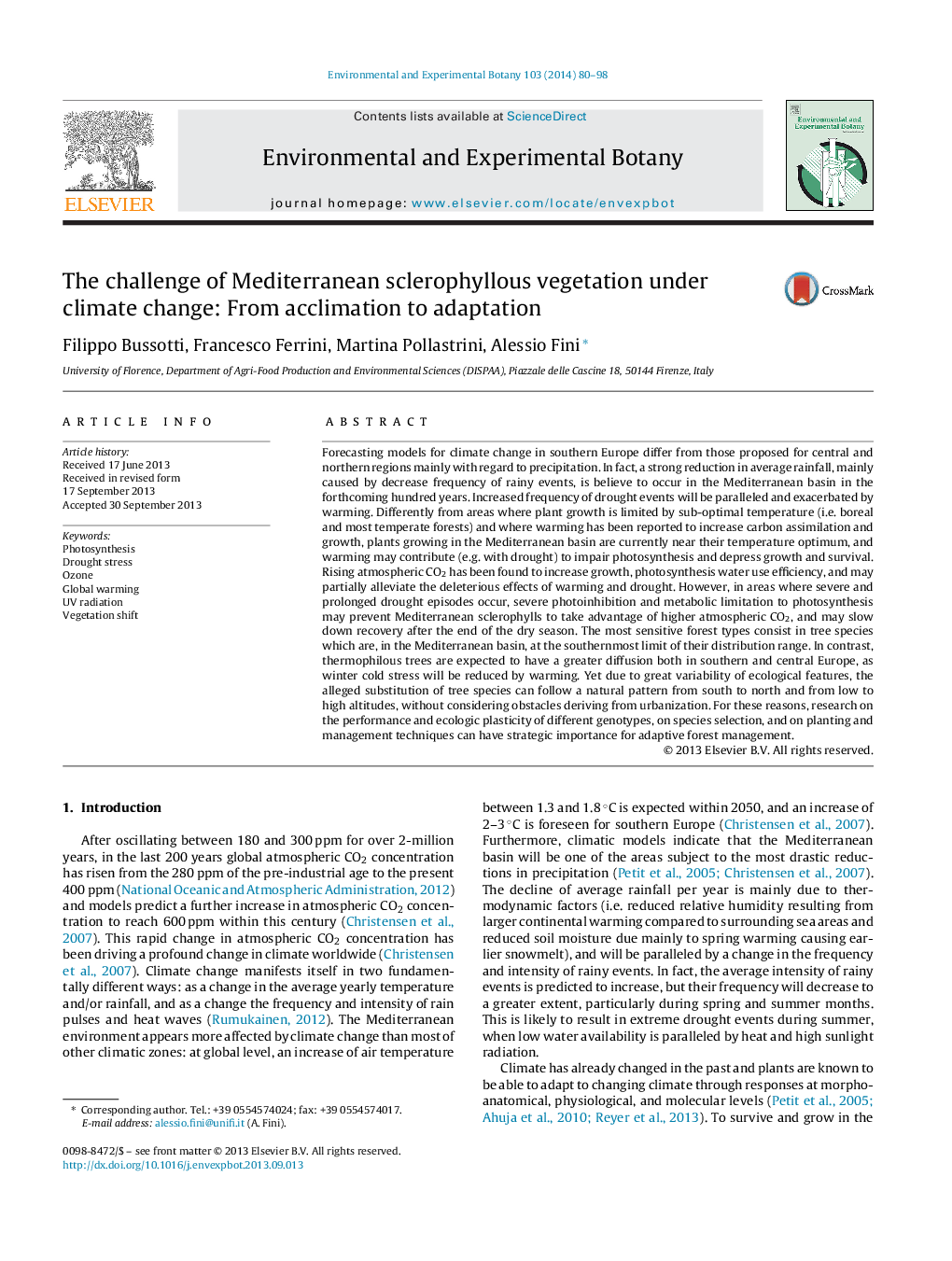| کد مقاله | کد نشریه | سال انتشار | مقاله انگلیسی | نسخه تمام متن |
|---|---|---|---|---|
| 4554437 | 1628074 | 2014 | 19 صفحه PDF | دانلود رایگان |
• Rising CO2 will exert beneficial effects on Mediterranean sclerophylls, which are slow in acclimation.
• Warming may counteract the effects of elevated CO2 on Mediterranean vegetation.
• Prolonged and severe drought events may favor drought-deciduous over sclerophyll species.
• If drought-induced metabolic limitations to photosynthesis prevail, the impact of rising CO2 is little.
• Species at the Southern limit of their distribution range will be the most affected by climate change.
Forecasting models for climate change in southern Europe differ from those proposed for central and northern regions mainly with regard to precipitation. In fact, a strong reduction in average rainfall, mainly caused by decrease frequency of rainy events, is believe to occur in the Mediterranean basin in the forthcoming hundred years. Increased frequency of drought events will be paralleled and exacerbated by warming. Differently from areas where plant growth is limited by sub-optimal temperature (i.e. boreal and most temperate forests) and where warming has been reported to increase carbon assimilation and growth, plants growing in the Mediterranean basin are currently near their temperature optimum, and warming may contribute (e.g. with drought) to impair photosynthesis and depress growth and survival. Rising atmospheric CO2 has been found to increase growth, photosynthesis water use efficiency, and may partially alleviate the deleterious effects of warming and drought. However, in areas where severe and prolonged drought episodes occur, severe photoinhibition and metabolic limitation to photosynthesis may prevent Mediterranean sclerophylls to take advantage of higher atmospheric CO2, and may slow down recovery after the end of the dry season. The most sensitive forest types consist in tree species which are, in the Mediterranean basin, at the southernmost limit of their distribution range. In contrast, thermophilous trees are expected to have a greater diffusion both in southern and central Europe, as winter cold stress will be reduced by warming. Yet due to great variability of ecological features, the alleged substitution of tree species can follow a natural pattern from south to north and from low to high altitudes, without considering obstacles deriving from urbanization. For these reasons, research on the performance and ecologic plasticity of different genotypes, on species selection, and on planting and management techniques can have strategic importance for adaptive forest management.
Journal: Environmental and Experimental Botany - Volume 103, July 2014, Pages 80–98
